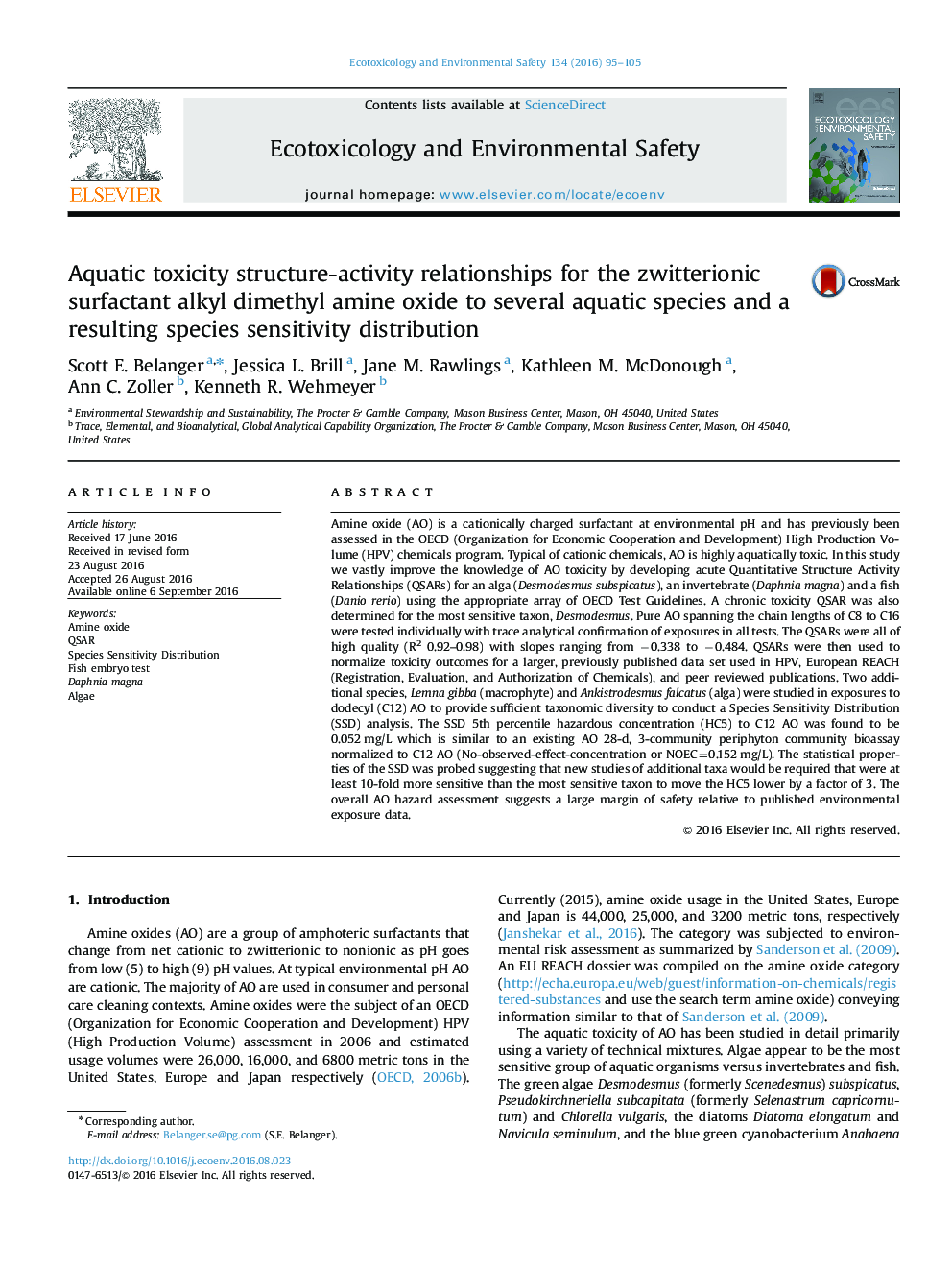| Article ID | Journal | Published Year | Pages | File Type |
|---|---|---|---|---|
| 4419146 | Ecotoxicology and Environmental Safety | 2016 | 11 Pages |
•New Quantitative Structure Activity Relationships for amine oxide were developed.•Acute and chronic QSARs were highly related to chemical hydrophobicity.•QSARS were used to harmonize toxicity data for 10 different species.•Species sensitivity distributions were consistent with algal microcosm studies.•There is a low risk to the aquatic environment following use of amine oxide.
Amine oxide (AO) is a cationically charged surfactant at environmental pH and has previously been assessed in the OECD (Organization for Economic Cooperation and Development) High Production Volume (HPV) chemicals program. Typical of cationic chemicals, AO is highly aquatically toxic. In this study we vastly improve the knowledge of AO toxicity by developing acute Quantitative Structure Activity Relationships (QSARs) for an alga (Desmodesmus subspicatus), an invertebrate (Daphnia magna) and a fish (Danio rerio) using the appropriate array of OECD Test Guidelines. A chronic toxicity QSAR was also determined for the most sensitive taxon, Desmodesmus. Pure AO spanning the chain lengths of C8 to C16 were tested individually with trace analytical confirmation of exposures in all tests. The QSARs were all of high quality (R2 0.92–0.98) with slopes ranging from −0.338 to −0.484. QSARs were then used to normalize toxicity outcomes for a larger, previously published data set used in HPV, European REACH (Registration, Evaluation, and Authorization of Chemicals), and peer reviewed publications. Two additional species, Lemna gibba (macrophyte) and Ankistrodesmus falcatus (alga) were studied in exposures to dodecyl (C12) AO to provide sufficient taxonomic diversity to conduct a Species Sensitivity Distribution (SSD) analysis. The SSD 5th percentile hazardous concentration (HC5) to C12 AO was found to be 0.052 mg/L which is similar to an existing AO 28-d, 3-community periphyton community bioassay normalized to C12 AO (No-observed-effect-concentration or NOEC=0.152 mg/L). The statistical properties of the SSD was probed suggesting that new studies of additional taxa would be required that were at least 10-fold more sensitive than the most sensitive taxon to move the HC5 lower by a factor of 3. The overall AO hazard assessment suggests a large margin of safety relative to published environmental exposure data.
Graphical abstractFigure optionsDownload full-size imageDownload as PowerPoint slide
